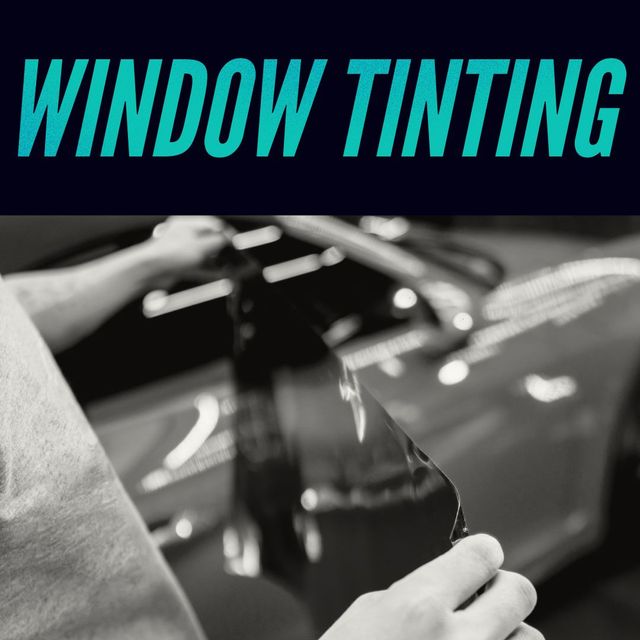How Car Window Tinting Keeps Your Automobile Cool in Heat
Wiki Article
Window Tinting Rules and Standards: What You Required to Know Prior To Tinting Your Auto
Before waging home window tinting for your car, it is necessary to acquaint yourself with the varied regulations and standards that control this technique across various states. These policies determine the permitted levels of color darkness, typically measured by visible light transmission (VLT) percents, and include certain stipulations for front windshields aimed at making sure road safety. Additionally, particular jurisdictions might supply clinical exceptions for individuals with certifying problems. Understanding these complexities can conserve you from prospective legal ramifications, however what are the particular regulations in your state?Summary of Home Window Tinting Rules
Window tinting laws are often based on variation across various jurisdictions, reflecting regional policies and security considerations. These legislations dictate the allowable degrees of tint darkness and reflectiveness on lorry windows, making certain that motorists keep sufficient exposure while additionally securing versus harmful UV rays and heat.Most regulations identify window tinting based upon the Visible Light Transmission (VLT) portion, which suggests the quantity of light that can pass with the home window. Typically, reduced VLT percentages signify darker colors. Legislations commonly set apart between the front, side, and back windows, with stricter restrictions applied to the front windshield to boost safety for both the chauffeur and other road individuals.
Conformity with window tinting laws is essential, as infractions can result in penalties, required elimination of the color, and potential rises in insurance policy costs. It is crucial for lorry proprietors to familiarize themselves with neighborhood regulations before proceeding with home window tinting installments.
State-by-State Color Laws
Understanding the certain home window tinting guidelines in each state is important for car owners seeking to follow the law. Each state in the U.S. has developed its very own set of policies governing home window tinting, which can differ significantly. These guidelines often determine the permitted degrees of tint darkness, the kinds of windows that can be tinted, and any type of clinical exemptions that might use.For instance, states like The golden state have rigid constraints on tint darkness for front home windows, while others, such as New Mexico, may allow darker colors. Furthermore, certain states mandate specific visibility percentages for various home windows, consisting of the windscreen, front side windows, and rear windows. It is crucial for car owners to acquaint themselves with their state's legislations to avoid potential fines or charges.
In addition, some states might require an accreditation sticker to be put on tinted home windows, showing conformity with state regulations. Failure to adhere to these regulations not only takes the chance of legal effects yet can additionally impact safety and security and exposure while driving. Consequently, automobile owners should perform complete study or consult local authorities to make sure full understanding and compliance with state-by-state color regulations.
Allowed Color Types and levels
Numerous car owners might be shocked to learn that enabled tint degrees and types differ widely throughout various states. Each state has actually established its very own policies concerning the permitted darkness and reflectivity of window tint, often determined by Visible Light Transmission (VLT) percentages. VLT describes the quantity of light that can go through the colored home windows; therefore, a lower percent suggests a darker color.
Furthermore, the kinds of color materials permitted can differ, with some states banning mirror-like or metal surfaces. It is essential for automobile owners to familiarize themselves with visit this site their state's specific regulations to guarantee compliance. Non-compliance can cause penalties, required removal of the color, or various other lawful effects, making it important to recognize these guidelines prior to continuing with installment.
Medical Exemptions for Tinting
While not all states give allowances for medical exemptions regarding window tinting, those that do acknowledge the need for details individuals to boost exposure and comfort due to medical problems. Numerous medical problems, such as lupus, skin cancer, and certain eye conditions, can make individuals particularly sensitive to sunlight. These individuals may require darker tints to secure themselves from harmful UV rays and glow.
It is necessary to note that also with a medical exemption, there may still be limitations on the level of tint allowed. Compliance with state legislations makes sure that individuals are both secured and within lawful restrictions. Those considering clinical exemptions need to contact their neighborhood Division of Electric motor Vehicles or equivalent authority to understand the procedures and needs essential to get an exemption successfully.
Fines for Non-Compliance
Falling short to comply with home window tinting legislations can lead to significant fines, which differ by state. Police are empowered to issue citations for lorries that do not abide by the defined tinting policies. These charges generally consist of fines, which can range from small amounts to numerous hundred bucks, depending on the seriousness of the infraction and the state in inquiry.In some territories, duplicated offenses might result in escalating penalties or extra penalties, such as compulsory court appearances. Non-compliance may necessitate the elimination of unlawful tinting, often at the owner's expense. In severe instances, habitual offenders may face suspension of their lorry registration until compliance is attained.
Additionally, insurance effects may emerge from getting several citations for window tint Visit Website infractions. Insurance providers might watch such offenses as an indicator of riskier habits, potentially leading to enhanced premiums or problem in insurance coverage.
To avoid these fines, it is crucial for vehicle proprietors to acquaint themselves with get redirected here their neighborhood home window tinting regulations and make certain that their car complies (Window Tinting). This proactive method not just prevents lawful implications yet additionally promotes road safety and security
Conclusion

Many laws classify window tinting based on the Visible Light Transmission (VLT) percentage, which indicates the quantity of light that can pass through the window. Conformity with window tinting laws is essential, as violations can result in penalties, obligatory elimination of the tint, and possible increases in insurance policy costs.Recognizing the particular window tinting guidelines in each state is important for lorry proprietors looking for to conform with the regulation. These guidelines frequently determine the allowable levels of color darkness, the kinds of windows that can be tinted, and any clinical exceptions that might apply.
For circumstances, states like California have rigorous constraints on tint darkness for front windows, while others, such as New Mexico, may enable darker tints.
Report this wiki page